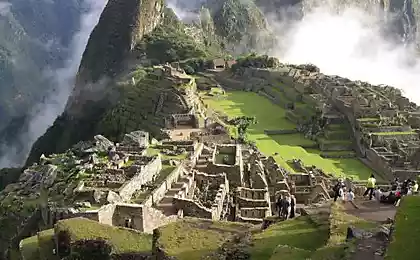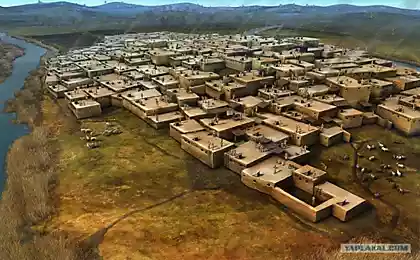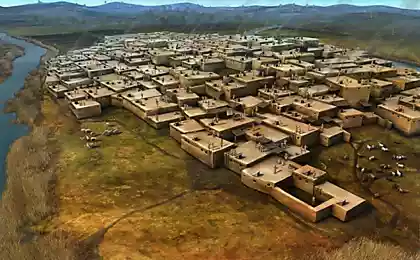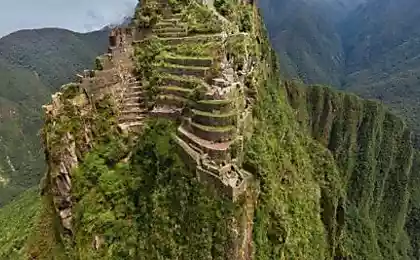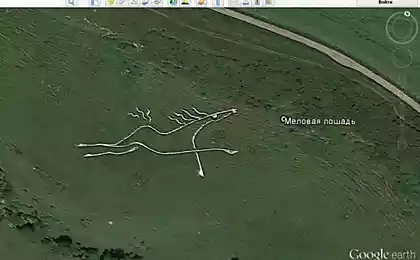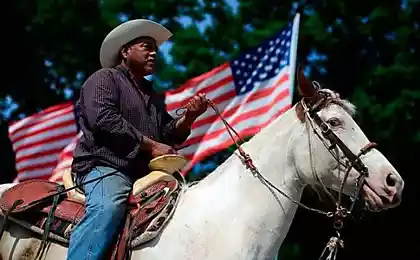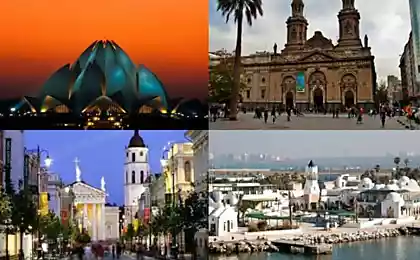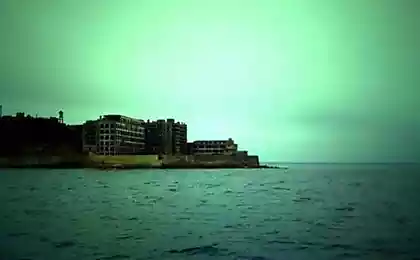896
The Lost City of the Incas
Machu Picchu (literally "old peak") is sometimes referred to as "The Lost City of the Incas." The city was established as a sacred mountain refuge of the Inca ruler Pachacutec great century before the conquest of his empire, that is, around 1440, and functioned do1532, when the Spaniards invaded the Inca Empire. In 1532godu all its inhabitants mysteriously disappeared.
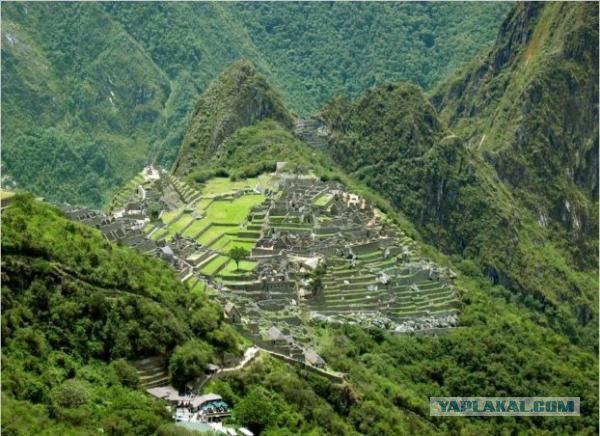
The city is located on the top of a mountain ridge at an altitude of 2057 meters above the valley of the Urubamba River in present-day Peru.
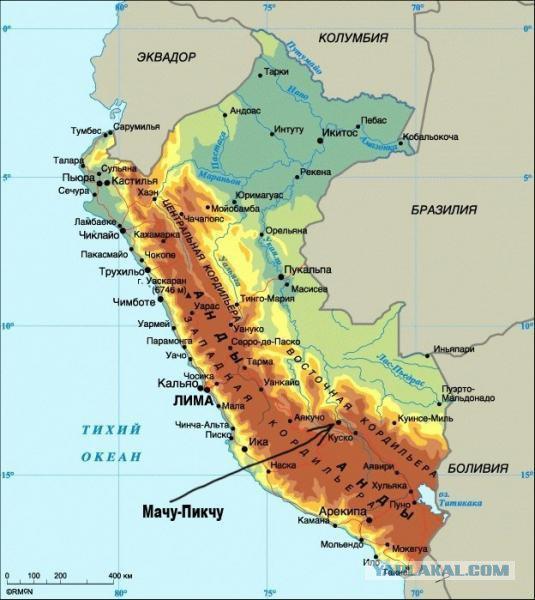
According to its modest size Machu Picchu can not claim to be a large city - there are not more than 200 structures. This is mainly temples, residences, warehouses and other facilities for public use. Most of them are composed of well-worked stone, closely fitted to each other slabs. It is believed that in it and around it lived up to 1200 people, who worshiped the sun god Inti there and cultivated crops on terraces.
More than 400 years the city was forgotten and remained in ruins.
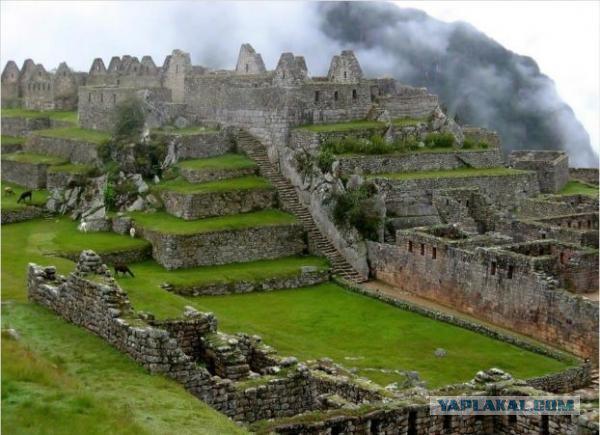
City discovered an American researcher at Yale University professor Hiram Bingham July 24, 1911. Bingham called the city of Machu Picchu. Later studies, however, revealed that it was there probably should not go about the city, but the Inca fortress, which because of its unapproachable location was noticed and not plundered by the Spanish conquistadors, but there was only 120 kilometers to the northwest of the occupied Spanish Inca capital of Cuzco. Later, archaeologists have cleared the temple and palaces.
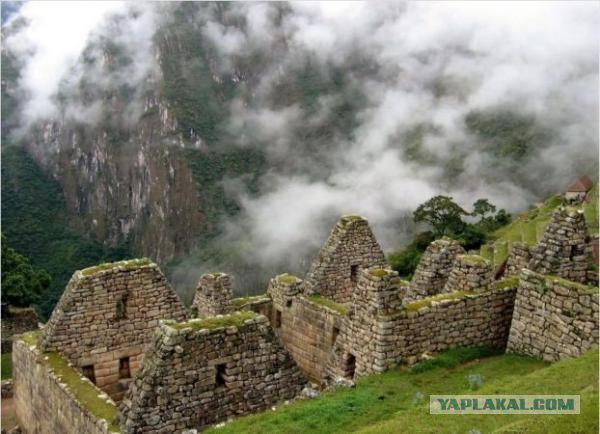
Center of the fortress is the so-called "sacred site of the temple", where in an elevated place sticks carved from granite pointed pole, to which lead in a spiral carved into the rock stage.
The researchers identified this ancient monolith of the so-called sacred stone of the Incas "intiguatana", "is bound to the sun." Bingham assumed here Inca symbolically "tied" the sun, so it does not run away from them during the winter solstice. Similar stone pillars were used as a sort of sunny hours and were in the center of the Inca Empire of the Sun cult.
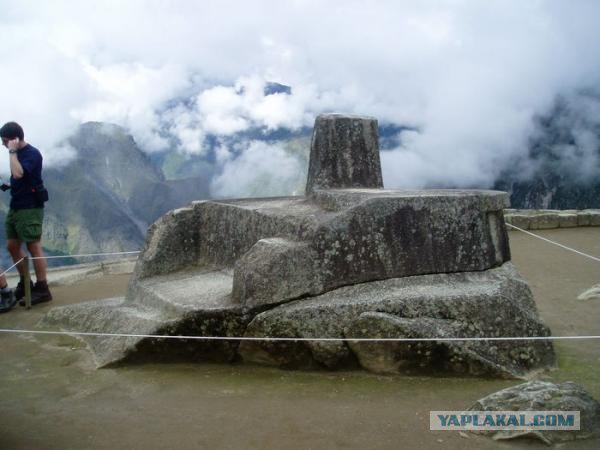
Not far from intiguatany found three well-preserved walls of the church to the altar of the Sun, composed of three blocks of rock stone. Another significant construction on the palace grounds is Torreon - a semicircular tower of the altar, under which is a cave named Hiram Bingham "Shrine of the rulers." Nearby, archaeologists stumbled upon the skeleton as 142, mostly women: perhaps they were "ahillas" - girl, destined for sacrifice to the god of the sun. In other, more ordinary buildings forming small neighborhoods, inhabited by the soldiers explicitly or family of artisans.
Free smooth surface, now called Plaza Prinsipal (main square), probably served as a place of meetings held during the celebrations such as the feast of the winter solstice.
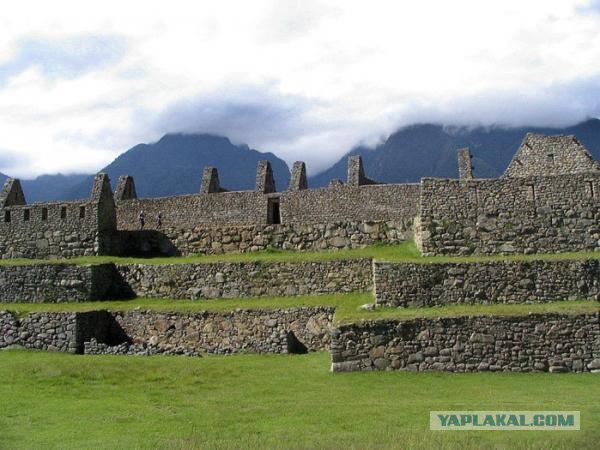
Hundreds of terraces climbing ledges to the actual urban area, at the same time used as plantation agriculture. On the narrow, rocky walls in abutting fields grew potatoes, corn and various vegetables. Land for planting, probably brought from the position five hundred meters below the valley of the Urubamba River. According to calculations, mountain field of Machu Picchu could feed about 10 000 people

The road from Machu Picchu in Cusco - a beautiful piece of art Inca builders. Even in the rainy season the road in good condition. The whole empire was covered by a wide network of communication, length of about 40,000 km. Roads in the Inca state were primarily strategic importance - for it had to pass the troops. In addition, they promote cultural exchange between all areas of the state. Thanks dear people learn from each other the art of pottery, weaving, metalworking, architecture and construction.
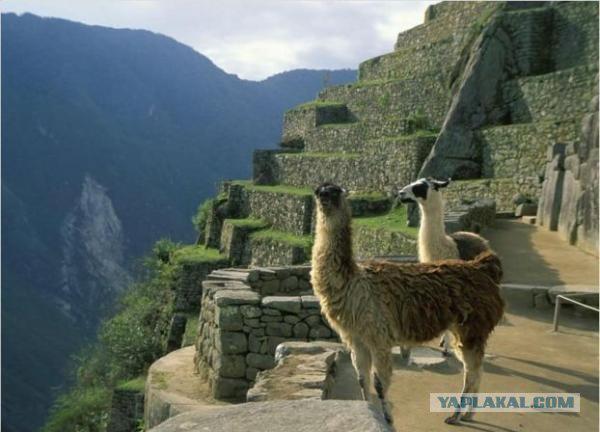
The Incas did not know the wheel, and mountain roads were often staggered. Those that were along the ocean coast, specially fenced on two sides adobe walls, protects from the sun, wind and sand drifts. If on the way I met swale, a mound. Through the river were built of stone and tossed rope bridges that the Incas considered sacred objects - the one who hurt the bridge, waiting for death.

To build a city in such an uncomfortable place for the construction, it required incredible skill. According to civil engineer Kenneth Wright and archaeologist Alfredo Valencia Segarra, more than half the effort expended to build, was spent on site preparation, drainage and work on laying the foundation. Massive retaining walls and stepped terraces over 500 years held the city, giving rains and landslides carry it with rock cornice
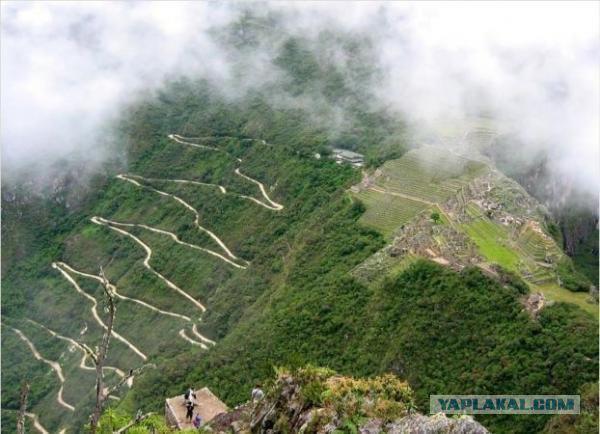
Heirs of the Andean cultures and to this day is considered Machu Picchu the symbol of their association with the great civilizations of the past, a part of the story that the conquerors could not erase the memory.
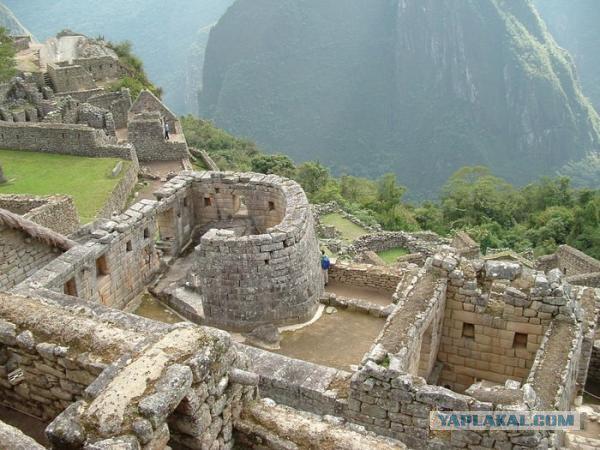
Source:

The city is located on the top of a mountain ridge at an altitude of 2057 meters above the valley of the Urubamba River in present-day Peru.

According to its modest size Machu Picchu can not claim to be a large city - there are not more than 200 structures. This is mainly temples, residences, warehouses and other facilities for public use. Most of them are composed of well-worked stone, closely fitted to each other slabs. It is believed that in it and around it lived up to 1200 people, who worshiped the sun god Inti there and cultivated crops on terraces.
More than 400 years the city was forgotten and remained in ruins.

City discovered an American researcher at Yale University professor Hiram Bingham July 24, 1911. Bingham called the city of Machu Picchu. Later studies, however, revealed that it was there probably should not go about the city, but the Inca fortress, which because of its unapproachable location was noticed and not plundered by the Spanish conquistadors, but there was only 120 kilometers to the northwest of the occupied Spanish Inca capital of Cuzco. Later, archaeologists have cleared the temple and palaces.

Center of the fortress is the so-called "sacred site of the temple", where in an elevated place sticks carved from granite pointed pole, to which lead in a spiral carved into the rock stage.
The researchers identified this ancient monolith of the so-called sacred stone of the Incas "intiguatana", "is bound to the sun." Bingham assumed here Inca symbolically "tied" the sun, so it does not run away from them during the winter solstice. Similar stone pillars were used as a sort of sunny hours and were in the center of the Inca Empire of the Sun cult.

Not far from intiguatany found three well-preserved walls of the church to the altar of the Sun, composed of three blocks of rock stone. Another significant construction on the palace grounds is Torreon - a semicircular tower of the altar, under which is a cave named Hiram Bingham "Shrine of the rulers." Nearby, archaeologists stumbled upon the skeleton as 142, mostly women: perhaps they were "ahillas" - girl, destined for sacrifice to the god of the sun. In other, more ordinary buildings forming small neighborhoods, inhabited by the soldiers explicitly or family of artisans.
Free smooth surface, now called Plaza Prinsipal (main square), probably served as a place of meetings held during the celebrations such as the feast of the winter solstice.

Hundreds of terraces climbing ledges to the actual urban area, at the same time used as plantation agriculture. On the narrow, rocky walls in abutting fields grew potatoes, corn and various vegetables. Land for planting, probably brought from the position five hundred meters below the valley of the Urubamba River. According to calculations, mountain field of Machu Picchu could feed about 10 000 people

The road from Machu Picchu in Cusco - a beautiful piece of art Inca builders. Even in the rainy season the road in good condition. The whole empire was covered by a wide network of communication, length of about 40,000 km. Roads in the Inca state were primarily strategic importance - for it had to pass the troops. In addition, they promote cultural exchange between all areas of the state. Thanks dear people learn from each other the art of pottery, weaving, metalworking, architecture and construction.

The Incas did not know the wheel, and mountain roads were often staggered. Those that were along the ocean coast, specially fenced on two sides adobe walls, protects from the sun, wind and sand drifts. If on the way I met swale, a mound. Through the river were built of stone and tossed rope bridges that the Incas considered sacred objects - the one who hurt the bridge, waiting for death.

To build a city in such an uncomfortable place for the construction, it required incredible skill. According to civil engineer Kenneth Wright and archaeologist Alfredo Valencia Segarra, more than half the effort expended to build, was spent on site preparation, drainage and work on laying the foundation. Massive retaining walls and stepped terraces over 500 years held the city, giving rains and landslides carry it with rock cornice

Heirs of the Andean cultures and to this day is considered Machu Picchu the symbol of their association with the great civilizations of the past, a part of the story that the conquerors could not erase the memory.

Source:

